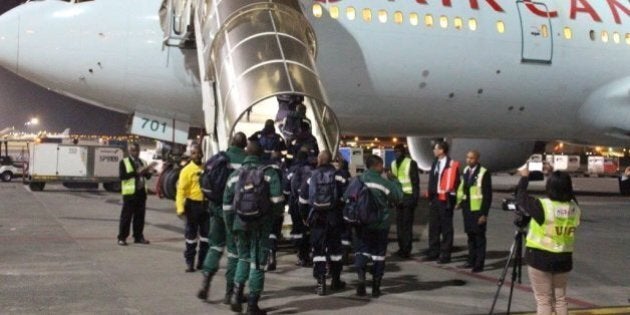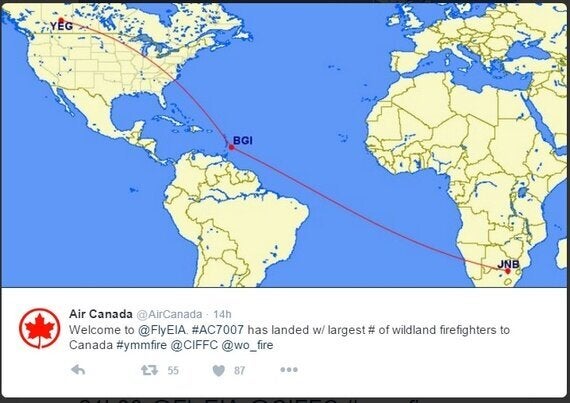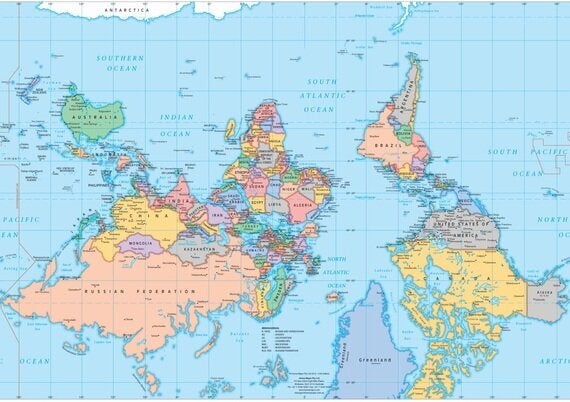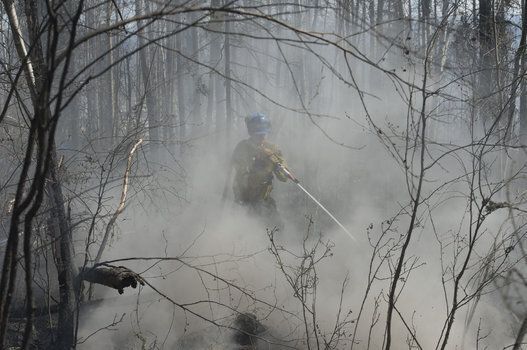
It's been a few weeks since thousands fled from the Canadian city of Fort McMurray to escape the raging wildfires. The news has died down but the big blaze rages on. It is not unusual for the U.S. to lend a hand in this type of exceptional natural disaster, as Canadians have been deployed state-side in similar occurrences. Outside of the bilateral relationship with its U.S. ally, foreign aid is not something Canadians are accustomed to.

Source: AirCanada's Twitter account
That's why eyebrows were raised when a contingent of 300 African firefighters landed in Edmonton to lend a hand. Three hundred -- that's 100 more firefighters than the U.S. is sending Canada's way to battle the historic blaze.
Currently, 2,267 firefighters are either already battling blazes across Alberta or are en route to do so. Over 300 of those firefighters are from out of province. Almost 500 hail from outside of Canada (298 firefighters from South Africa and 199 from the United States). They are being supported with the help of 95 helicopters, 263 pieces of heavy equipment and 24 air tankers. [source ]
According to The Globe and Mail's Africa corresponded Geoffrey York, the PR line goes as follows: "South Africa is repaying a debt to the Canadian people for their support for the anti-apartheid struggle." It's an interesting rationale considering Canada's frosty relationship with Mandela's party, the ANC, over the past decade.
The more plausible explanation is that the Fort McMurray aid initiative is a "strategy for changing the lives of unemployed South African youth. The jobless young men and women were recruited for a government-funded organization called Working on Fire." WOF has trained 5,000 firefighters to serve in 200 bases across South Africa.
This Canadian experience is quite the resume-builder for participants in the program. One can imagine a successful eight-week stint in Fort Mac, while pious and noble, is also a career springboard. Everybody wins!
The norm: sending aid to Africa
The Canadian International Development Platform estimates that Canada sent $2 billion in international assistance to Africa (2014), or about $64 per Canadian.
Many top aid workers and international development leaders cut their teeth in Africa, Haiti or South America. They spend a few weeks to a year acculturating foreign cultures and learning the art of Third World creativity and resourcefulness all the while finding themselves contributing to an aid project. Beyond the white saviour complex feel-good benevolence, they often earn a good living and build career cred with hardship postings.
There is general dispute on how effective voluntourism is, and whether the 'aid' provided by the West is to developing nations is working. But there is no doubt that some savvy people manage to profit from a crisis — usually those for whom the aid is destined aren't the chief beneficiaries.
Luckily, when the aid flows from Africa to Canada, it seems all parties benefit equally.
The norm: white, male firefighters
Both the U.S. and Canada have a checkered history when it comes to its firefighters. The coveted career was often restricted to white men, despite the availability of qualified candidates of other ethnicities. Since 1983, the percentage of black firefighters in the U.S. has hovered around seven to 10 per cent. As for Hispanics, the National Fire Protection Association reports a jump from four per cent in 1983 to almost 10 per cent in 2012.
From New York City to Chicago and Los Angeles, fire departments experience difficulties in recruiting and retaining qualified personnel who happen to be Africa-American.
Canada doesn't keep racial statistics consistently (birthplace, gender, language spoken at home are the preferred barometers of social progress), but we know that the City of Montreal counts nine black firefighters out of roughly 2,400, and 20 visible minorities. That's less than one per cent.
Toronto's fire chief estimated the percentage of visible minorities in its union membership is two per cent, despite a pool of diversity in the 'most multicultural city in the world'. Incoming recruits move the needle at a snail's pace.
Vancouver boats a large, vibrant Asian-Canadian community -- a population which hovers around the 50 per cent mark. City officials told me in an email that they "do not currently track the ethnic diversity of its staff." Their derisory diversion plan hinges on tracking the diversity of future applicants. In 2007, a spokesperson for nearby Richmond, B.C. said the fire department less than 10 per cent of its force could be "categorized as visible minorities."
Halifax' fire department chief apologized for instances of racism throughout the department in 2013.
People of colour are chronically underrepresented in North American firefighting. The arrival of a planeload of African firefighters might have increased the diversity of firefighters on Canadian soil by as much as 250 per cent.
Firewomen: the next feminist frontier
Fewer than four percent of U.S. firefighters are women, despite almost half of female firefighter candidates passing physical ability tests, a study says. In 2007, more than half of paid fire departments had never hired a female firefighter.
Montreal boasts 32 women firefighters (one per cent). Toronto had 67 female firefighters in 2013 (two per cent). Vancouver has 21 women "working in Fire Rescue Services" (three per cent) but it is unclear how many are firefighters. It's the same story in Ottawa, Edmonton, etc. Of 22,000 professional firefighters in Canada, only about three per cent are women.
In contrast, South Africa's Working On Fire 300-person delegation to Fort McMurray boasts over 60 women. Working On Fire tells me that 21 per cent of the South African deployment are of the weaker stronger sex. That's seven times the North American average!
South Africa Leads the Way
In a time of need, South Africa graciously sent help Canada's way. The aid isn't just in manpower, it is in a recalibration of social progress barometers for women and minorities. Westerners often look at Africa as upside down and backwards. Perhaps it is the West that is lagging behind. Working on Fire proves that the West still has a lot to learn from Africa.

Follow HuffPost Canada Blogs on Facebook
ALSO ON HUFFPOST:
